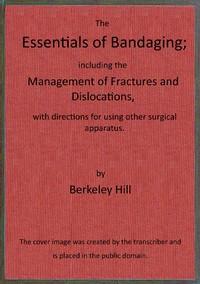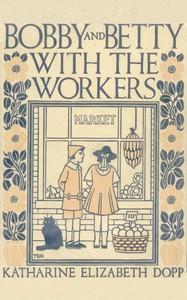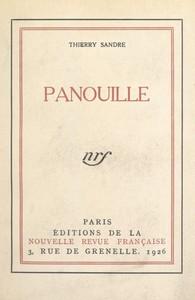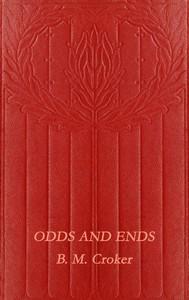|
|
Read this ebook for free! No credit card needed, absolutely nothing to pay.Words: 56894 in 33 pages
This is an ebook sharing website. You can read the uploaded ebooks for free here. No credit cards needed, nothing to pay. If you want to own a digital copy of the ebook, or want to read offline with your favorite ebook-reader, then you can choose to buy and download the ebook.

: The essentials of bandaging by Hill Berkeley - Fractures Treatment; Bandages and bandaging; Surgery Minor; Dislocations Treatment@FreeBooksThu 08 Jun, 2023 INDEX Portrait of George Augustus Selwyn at the age of fifty-one: from a pastelle by Hugh Douglas Hamilton, drawn in 1770. Hamilton, who was an Irish artist of considerable reputation, was at this time working in London. After a long visit to Italy he returned to Dublin in 1792 and was elected a member of the Royal Hibernian Academy. This drawing is in the possession of the Earl of Carlisle at Castle Howard, Yorkshire. Group of George Augustus Selwyn and Frederick, fifth Earl of Carlisle: from a picture by Sir Joshua Reynolds, P.R.A. The dog by the side of Selwyn is his favourite, Raton. Selwyn is dressed in a pale brown coat and breeches, a red vest trimmed with gold lace, and light grey stockings; the Earl of Carlisle in a reddish brown coat and pale yellow vest. He wears the green ribbon and star of the Order of the Thistle. This picture was probably painted about the year 1770, and is in the possession of the Earl of Carlisle at Castle Howard, Yorkshire .... TABLE OF DATES 1719. Birth. 1739. Matriculated at Hart Hall, Oxford. 1740. Clerk of the Irons and Surveyor of Meltings at the Mint. 1742-3. In Paris; having gone down from Oxford for a time. 1745. Finally left Oxford. 1747. M.P. for Ludgershall. 1751. Death of father and elder brother. 1754. M.P. for Gloucester. 1755. Paymaster of the Works. 1767. Correspondence with fifth Earl of Carlisle commences. 1779. Registrar of the Court of Chancery of Barbadoes. 1780. Loses seat for Gloucester. M.P. for Ludgershall. 1782. Loses office of Paymaster of the Works. 1784. Surveyor-General of Land Revenues of the Crown. 1791. Death. Health is the first good lent to men; A gentle disposition then Next to be rich by no bye ways, Lastly with friends t'enjoy our days. HERRICK It is therefore not surprising that Selwyn has been handed down to posterity as a wit. It is a dismal reputation. Jokes collected in contemporary memoirs fall flat after a century's keeping; the essential of their success is spontaneity, appropriateness, the appreciation even of their teller, often also a knowledge among those who hear them of the peculiarities of the persons whom they mock. When we read one of them now, we are almost inclined to wonder how such a reputation for humour could be gained. Wit is of the present; preserved for posterity it is as uninteresting as a faded flower, nor can it recall to us memories sunny or sad. But Selwyn was a man who while filling a conspicuous place in the fashionable life of the age was also so intimate with statesmen and politicians, and so thoroughly lives in his correspondence, that in following his life we find ourselves one of that singular society which in the last half of the eighteenth century ruled the British Empire from St. James's Street. Selwyn's life, though passed in a momentous age, was uneventful, but the course of it must be traced. George Augustus Selwyn, second son of Colonel John Selwyn, of Matson, in Gloucestershire, and of Mary, daughter of General Farrington, of Kent, was born on the 11th of August, 1719. His father, aide-de-camp to Marlborough and a friend of Sir Robert Walpole, was a man of character and ability, well known in the courts of the first and second Georges. Selwyn, however, probably inherited his wit and his enjoyment of society from his mother, who was Woman of the Bedchamber to Queen Charlotte. Horace Walpole writes of her as "Mrs. Selwyn, mother of the famous George, and herself of much vivacity, and pretty." Selwyn's elder brother died in 1751, and grief at his loss seems to have hastened the death of his father, which occurred in the same year. To come to more recent times, the manor house was built in 1594 by Sir Ambrose Willoughby. From him the estate was purchased in 1597 by Jasper Selwyn, Counsellor at Law, of Stonehouse, who was the fourth in descent from John Selwyn, one of a Sussex family. "I stayed two days at George Selwyn's house, called Matson, which lies on Robin Hood's Hill; it is lofty enough for an Alp, yet it is a mountain of turf to the very top, has wood scattered all over it, springs that long to be cascades in twenty places of it, and from the summit of it beats even Sir George Lyttleton's views, by having the city of Gloucester at its foot, and the Severn widening to the horizon. His house is small, but neat. King Charles lay here at the siege, and the Duke of York, with typical fury, hacked and hewed the window-shutters of his chamber, as a memorandum of his being there. Here is a good picture of Dudley, Earl of Leicester, in his later age, . . . and here is the very flower pot and counterfeit association for which Bishop Sprat is taken up, and the Duke of Marlborough sent to the Tower. The reservoirs on the hill supply the city. The late Mr. Selwyn governed the borough by them, and I believe by some wine too. . . . Free books android app tbrJar TBR JAR Read Free books online gutenberg More posts by @FreeBooks
: Bobby and Betty with the workers by Dopp Katharine Elizabeth Brand Mary Spoor Illustrator - Readers (Primary)@FreeBooksThu 08 Jun, 2023
|
Terms of Use Stock Market News! © gutenberg.org.in2025 All Rights reserved.






